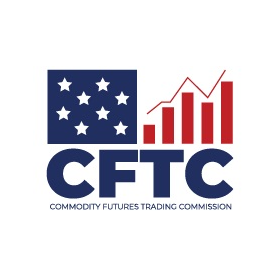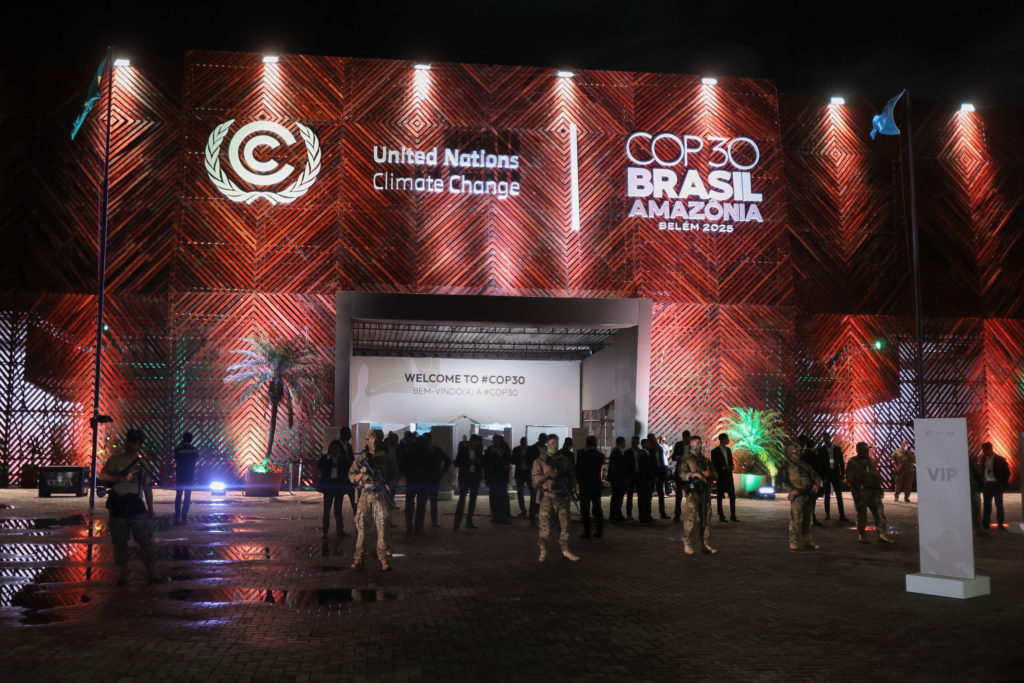This is an audio transcript of the Unhedged podcast episode: ‘Big deals in Big Pharma’
[MUSIC PLAYING]
Robert Armstrong
There has been a wild and hectic series of M&A deals in the pharmaceuticals industry. We are now headed for a record year for pharma M&A, in fact. But sometimes, mergers are a sign of strength for an industry and sometimes they are a sign of weakness. Today on the show, drugs, politics and deal making.
This is Unhedged, the markets and finance podcast from the Financial Times and Pushkin. I am Rob Armstrong, US finance commentator at the Financial Times, coming to you from a chilly and wintry New York City and joined in person by James Fontanella-Khan, our US finance editor.
James as an Italian, how are you bearing up under all this chilly weather?
James Fontanella-Khan
I’m freezing. I’m not liking it at all, but hello everyone.
Robert Armstrong
OK. Cold, warm or in between? What is going on with the US pharma industry?
James Fontanella-Khan
Well, the pharma industry on the M&A side of things is bloody hot right now. (Robert laughs) I’ll tell you that. We’ve seen a crazy wave of deals. We’re on track for a record year and a lot is happening. I didn’t put a lot of faith last time I was on the show about this deal boom being sustained.
Robert Armstrong
You were short the deal boom and it’s keeping on booming.
James Fontanella-Khan
Is there a video here, no? Otherwise, I’d be eating my hat. (Robert laughs)
Robert Armstrong
Oliver Barnes was on too and he was long the deal boom. And he looks right and you look wrong for now.
James Fontanella-Khan
That’s why he’s been breaking all these stories because it’s like he’s trying to make it happen. He’s been on fire so why are we having so many deals, particularly in the pharmaceutical industry? Well, it’s the same old story, like Big Pharma has to hunt for new assets because these days a lot of these big guys don’t do the same amount of R&D that they used to. So that has been outsourced to a bunch of VCs backing the next . . .
Robert Armstrong
The smaller companies.
James Fontanella-Khan
Exactly. And . . .
Robert Armstrong
So it’s a patent thing, as always.
James Fontanella-Khan
It’s a patent thing.
Robert Armstrong
The old drugs go off patent and they have to be replaced. And you used to replace them in-house, but now you have to hunt them down and kill them.
James Fontanella-Khan
Exactly. So you’ve got a lot of guys running out of their top drugs, which are protected before they become generics. And so yes, this being in frenzy. What is phenomenal is there’s a lot of these assets out there, maybe they’re approaching, you know, the last stage of clinical trials.
And maybe, there’s one or two players looking at an asset but here we have often like four, five, six Big Pharma companies going after the same asset and you see premiums of like 300 per cent Yeah.
Robert Armstrong
Cidara was an amazing story. Walk us through that one.
James Fontanella-Khan
I mean, so Oli calls me a couple of days before the deal got announced.
Robert Armstrong
Oliver Barnes.
James Fontanella-Khan
Yeah, Oliver Barnes, our M&A reporter, and he had a tip and we started chasing it and like we’re trying to confirm and like and as he goes, he is like, oh, the asset is worth about $3bn. So, you know, go for the usual premium of maybe no, 40, 50 per cent for these assets. So maybe it’ll go up to $4bn or $5bn.
And suddenly, he’s hearing it’s a three-way horse race. And he said, JFK, I think it’s like going for $9bn. And I say, you must go. Your sources are a little weak, like can . . . just go back to your guy. And I say, no, honestly, it’s like, it’s $9bn. And we waited, we got all the confirmations that we needed, we put out the story and surely next day, the Cidara deal is confirmed. Merck bought it and yeah, it was like astonishing.
Few days later, similar thing with another company called Halda. So Cidara is kind of as a flu vaccine, Halda, instead it has a kind of a cancer drug. And again, went for $3bn, is a private company. Nobody had really heard much about it and J&J beat a bunch of other big guys out there. And then, the mother of all crazy deals was the sale of Metsera.
Robert Armstrong
Yeah. I want to get to Metsera in a second. But first, let me give you some context. The pharma industry in particular and I should say the healthcare sector generally, has been underperforming the market pretty hard over the last five or 10 years.
I mean, when I first started working in finance, pharma was kind of where tech is now. You know, this is 20 years ago or whatever and it was like these companies were huge and they grew fast and they did a lot of deals and so forth. But they were like top of the world and now they’re kind of low growth and a bit beat up.
And so I think we have to acknowledge that in the background that this is an industry that’s kind of looking for its soul while tech is everything and pharma is kind of languishing in some way.
James Fontanella-Khan
Well, you started the show saying, is it a sign of strength or a sign of weakness?
Robert Armstrong
Yes.
James Fontanella-Khan
And I think, in most cases it is a sign of weakness. In the sense that you’re running out of options and you got to restock. You gotta find . . . and a lot of these deals we can get into it, especially with the Metsera situation, they’re defensive. You’re trying to like get hold of a drug to essentially snatched away from one of your rivals.
Robert Armstrong
Now let’s turn to Metsera. What makes this deal particularly interesting, of course, is that it’s in the hottest area of pharma, which is of course, weight loss.
James Fontanella-Khan
Indeed.
Robert Armstrong
How is its GLP-1 drug different from the others?
James Fontanella-Khan
So the thing that makes Metsera different from the others is the fact that it can, with one dosage over a month, instead of every week, it can give you the same kind of results that an Ozempic gives you right now. Allegedly. I mean, there’s still . . .
Robert Armstrong
Yeah, you know, a lot of game to play.
James Fontanella-Khan
Exactly.
Robert Armstrong
Clinically.
James Fontanella-Khan
But fundamentally, this is the big innovation among others. And then the various ways that you can consume it.
Robert Armstrong
OK. Bidding war.
James Fontanella-Khan
Well, we know in the world is the kind of, the original, the OG of weight-loss drugs is Novo . . .
Robert Armstrong
Novo Nordisk.
James Fontanella-Khan
Nordisk, which essentially this, the Danish company that kind of discovered . . .
Robert Armstrong
Opened the market.
James Fontanella-Khan
Yeah. Well, they discovered their diabetes drug was actually the magic drugs. The thing everybody loves is like to look lean and mean and it exploded.
Robert Armstrong
So that was Ozempic and then Wegovy were their drugs.
James Fontanella-Khan
Exactly. And then Lilly, Eli Lilly came up with a rival drug. And it’s been amazing.
Robert Armstrong
Zepbound.
James Fontanella-Khan
Exactly. And like, and Eli Lilly has literally exploded. So now it’s way bigger the Novo.
Robert Armstrong
And interestingly, Novo, which just two years ago, was the biggest stock in Europe and was the stock on everyone’s lips and everybody was overweight.
This stock, since I’m looking at stock . . .
James Fontanella-Khan
No pun intended.
Robert Armstrong
. . . stock chart here. (Laughter) Since the middle of 2024, that stock has fallen by two-thirds.
James Fontanella-Khan
Correct.
Robert Armstrong
And if I can just put a total tangent into our conversation. You know what I think about when I look at Novo’s chart? Nvidia. Because, you know, everybody was like, Novo is the only company that can do this thing, this weight-loss drug, which is revolutionising everything.
Nobody ever will ever catch up. La, la, la, la, la, la. And now, it’s down two-thirds. It just rhymes to me with how everybody talks about, no one will ever catch up with Nvidia in GPUs. I’m just throwing that out there as chum. Now, back to our regularly scheduled programme.
James Fontanella-Khan
Love it. But a little short from Rob Armstrong on the side.
Robert Armstrong
OK. But so now we have Lily, which is killing it in weight-loss drugs.
James Fontanella-Khan
Absolutely.
Robert Armstrong
(Overlapping speech) Novo, which is struggling.
James Fontanella-Khan
Correct.
Robert Armstrong
And everybody else in the industry kind of looking along from the sidelines, like, how can I get a piece of this action?
James Fontanella-Khan
A hundred per cent right.
Robert Armstrong
Here’s this biotech that has a technology.
James Fontanella-Khan
So let’s do a little TikTok. We love the TikToks.
Robert Armstrong
That is a journalistic term for our listeners at home.
James Fontanella-Khan
Thank you for saying that story.
Robert Armstrong
For a story that lays out in sequential order, how a deal went down.
James Fontanella-Khan
So in September, Pfizer, strikes deal with Metsera, another scoop brought to you by Oli Barnes. So that deal is really Pfizer’s opportunity to make inroads in the weight loss category.
Robert Armstrong
Yes.
James Fontanella-Khan
All is good. They pay about $7bn, a bit of money upfront and a little later. All seems good, we’re in September. We knew that there were a lot of companies looking at this. Usually after a deal happens, you get a proxy filing where you can see all the kind of companies, A, B, C, D.
There were a lot of companies kind of fighting for Metsera. It’s done. Everybody goes back to their normal life. And then late in October, out of the blue, Novo makes a comeback. And essentially, Novo made an offer, which was higher than the one that Pfizer made. And the board of Metsera said that after reviewing Novo’s bid, they thought it was superior to Pfizer’s bid. Now, interestingly, back in that . . .
Robert Armstrong
We’re in October now.
James Fontanella-Khan
Exactly. In that . . .
Robert Armstrong
I’m looking at the stock price of Metsera, which you can look up at home, and it’s like a staircase going up, you know what I mean?
James Fontanella-Khan
It’s a staircase to heaven.
Robert Armstrong
Yeah, exactly. (Laughter)
James Fontanella-Khan
For its VC backers. But interestingly, Metsera’s advisers said to Metsera that they should go with Pfizer back in September, despite the fact that at the time Novo had already made a bid which was higher in dollar values to Pfizer’s.
The reason they went with Pfizer then for a lower price was because they deemed Pfizer’s bid safer from an antitrust perspective, ie, that means when you need to get regulatory approval, they were concerned that the FTC, which would be . . .
Robert Armstrong
Yes.
James Fontanella-Khan
. . . the agency looking into this would’ve determined that like, well, Novo already has Ozempic.
Robert Armstrong
They’re gonna corner the market in some way. It’s too much market power.
James Fontanella-Khan
It’s a bit anti-competitive, and we already know that Trump is unhappy with the very high price of . . .
Robert Armstrong
OK, now I’m gonna stop you right there, because as a paranoid person. I have to ask, in your opinion, and of course we can only speculate here, but let’s speculate together. Did the mere fact that Pfizer was an American company play in that calculation, or was it really just about the portfolios of the two companies and the competitive concerns? In other words, Trump being president, does that tip the scales towards the American bidder?
James Fontanella-Khan
I’ll bring you the facts that I am aware of and then we can use them to kind of answer that question. The immediate reaction from the Pfizer side, when Novo kind of gate crashed the deal in October. So in September, Pfizer had an agreed deal with Metsera. In October, Novo gate crashes the deal with a higher bid.
So the reaction of Pfizer immediately is, this is a European company going after an American asset at a time when it already has a drug. We wanna bring down the cost of this drug for Americans. In all of their communication, the word America, America, America first was very prevalent. It was very clear that they were leaning on the fact that like regulators had to support this deal because it was an American deal and they had to oppose the European evil company.
Robert Armstrong
Now here’s some words from Mike Doustdar. Am I saying that correct? That’s the new CEO of Novo Nordisk who got the job after the last guy got sacked because . . .
James Fontanella-Khan
Correct.
Robert Armstrong
Share prices falling through the floor. This is him talking to the FT. It became evident that Pfizer won this at a lower bidding price than we place forward. That’s when I got very upset. I felt not in America where there is free market advocacy, shareholder value creation, and there’s just something unfair. So, you know, he’s putting some aspersions on the process there.
James Fontanella-Khan
100 per cent
Robert Armstrong
I would say.
James Fontanella-Khan
And it’s important to, again, to bear in mind that Albert Bourla, the CEO of Pfizer, soon after Trump won the election, made it a priority to spend time with the President and to get close to the president. He spent a lot of time in Mar-a-Lago.
Robert Armstrong
Yes.
James Fontanella-Khan
He cut a deal with Trump on kinda the cost of some drugs.
Robert Armstrong
Yes.
James Fontanella-Khan
And so this was his chance, like, see if that investment . . .
Robert Armstrong
Yeah. Yeah. Come back to him. So did we get to the end with Metsera? Did we get it sold at the final price? Did we finish the TikTok there?
James Fontanella-Khan
No, we’re, we’re not done.
Robert Armstrong
OK. Keep going, keep going.
James Fontanella-Khan
So I’ve been covering this for over a decade. I cannot remember anything so insane. The back-stabbing, the press releases accusing the others of like committing, because they started suing the crap out of each other. It was like hilarious.
Robert Armstrong
I didn’t know there was lawsuits.
James Fontanella-Khan
No, no, that’s like. It’s like, because essentially Pfizer was trying to get Delaware to throw out Novo’s bid arguing that we have an agreed bid. They cannot just kind of gate crash. And Delaware said, we are here to represent essentially shareholder interest. And if somebody comes with a higher bid, you gotta let the bidding war go on. The show must go on.
Robert Armstrong
Yes, hurrah for that. Hurrah for that. Good for Delaware. Good for the great state to Delaware.
James Fontanella-Khan
And so, Delaware really did a solid to the Metsera shareholders. At some point, there’s a letter from the FTC that manages to make its way into the press. And essentially the FTC says, there’s no way Novo can get this deal done without going through us, point number one. And point number two, this deal if it goes with Novo, looks somewhat anti-competitive. So at this point, no, the FTC can make a final judgment, but it’s just like putting some vibes out there.
Robert Armstrong
Yeah, pretty strong vibes. I would say.
James Fontanella-Khan
Again, very unusual for that kind of letter to leak out to the press, but a few hours later, maybe, I think the day after, there was a final kind of rally of like bids and essentially, Novo had put the highest bid of just, I think $83, a little higher than 80. Pfizer matches the Novo bid. And essentially. Yeah, the Metsera guys decided we’ve been greedy enough. We went from $7bn to $10bn. We made $3bn in a couple of days.
Robert Armstrong
We’ll hit the Pfizer bid, which is the safer one.
James Fontanella-Khan
Exactly, yeah. And they mentioned that, you know, following the letter from the FTC, we’ve determined that we should go with Pfizer.
Robert Armstrong
OK, so earlier this month we had the president coming out with a big announcement. He has this thing called, is it TrumpRx?
James Fontanella-Khan
Correct.
Robert Armstrong
Which is this program through which people can buy drugs at discounted rates. He had a great big announcement, which you can look up on the internet, about how he’s going to make obesity drugs radically cheaper.
Clearly, he has zeroed in and the administration has zeroed in on drug prices. As something the American people are sensitive to, and if you’re sitting there in the corner office at one of these big drug companies, this has gotta make you sweat a little bit. And I wonder if this wave of deals is a way to say, we’re under pressure. We need to get bigger and stronger. Does that story of the case make sense to you? JFK?
James Fontanella-Khan
A hundred per cent. I mean, there’s no doubt that like, every CEO of a big pharma company is under pressure right now on pricing. And, you know, pricing has been an issue for every administration. Let’s not forget like Obama, Biden. Nobody likes crazy prices for crazy drugs.
Robert Armstrong
No.
James Fontanella-Khan
Trump has been effective at scaring the living hell out of a lot of these people. They’re all bending the knee.
Robert Armstrong
Yeah, yeah. No, it’s true.
James Fontanella-Khan
And the pharma guys have done the same. I mean, you made the point that, you know, there’s a broader distribution of these drugs, so it kind of makes up for the discount.
Robert Armstrong
Yeah.
James Fontanella-Khan
But that’s fine. That like, that’s a win for Trump, essentially. And so that pressure is gonna keep being at them
Robert Armstrong
Final question before we go to the break and then to Long/Short. The last time we had a major wave of big pharma to big pharma mergers, major companies buying each other was year of our Lord 2009 when we had Roche and Genentech, Pfizer and Wyeth, Merck and Schering-Plough. These were enormous deals.
James Fontanella-Khan
I wasn’t even covering deals then.
Robert Armstrong
I know it was a long time ago.
James Fontanella-Khan
Give me a big pharma to big pharma deal, please.
Robert Armstrong
And we haven’t seen that yet. Are the conditions in place for a wave of not big to small consolidation, but big to big?
James Fontanella-Khan
Yes. The conditions have never been better. And it goes back to the point you were making earlier about these executives being under pressure by the current executive to lower drug prices.
Robert Armstrong
And under pressure from the market because their share prices are not in great shape.
James Fontanella-Khan
And so going back to the original question, is it a good sign, a bad sign, defensive or offensive?
I think if they can make an argument to the administration that by allowing big pharma to big pharma M&A. So bringing together two giants will lower the price of drugs. Cha-ching. The deal will go through.
[MUSIC PLAYING]
Robert Armstrong
We’ll be right back with Long/Short.
[MUSIC PLAYING]
Listeners, welcome back. Today we have a very special edition of Long/Short with extra speculative elements. The Nasdaq is down 7 per cent from its highs of late October, and what we are all wondering here at Unhedged World headquarters is whether the AI bubble is popping while we speak.
So, James, rest of the year, are you long or short? The Nasdaq?
James Fontanella-Khan
I’m going long.
Robert Armstrong
Woo.
James Fontanella-Khan
I’m a believer
Robert Armstrong
That’s why we bring you on. That’s why we bring you on the show, James. Guns blazing.
James Fontanella-Khan
And the reason I’m long is because this is a rare opportunity to buy a bit of that dip and it will sail back up to the top.
Robert Armstrong
I will preface my answer by saying nobody can predict stock price is over six week period, but that won’t stop me from predicting them. And I am short. I think the momentum is broken in these tech stocks and we’re gonna get a meaty correction into the end of the year. And what happens in 2026 is anyone’s guess. Listeners, we will be back in your ears with more guesses this Thursday.
[MUSIC PLAYING]
Unhedged is produced by Jake Harper and edited by Bryant Urstadt. Our executive producer is Jacob Goldstein. Topher Forhecz is the FT’s acting co-head of audio. Special thanks to Laura Clarke, Alistair Mackie, Gretta Cohn and Natalie Sadler. FT premium subscribers can get the Unhedged newsletter for free. A 30-day free trial is available to everyone else. Just go to ft.com/unhedgedoffer.
I’m Rob Armstrong. Thanks for listening.
[MUSIC PLAYING]







